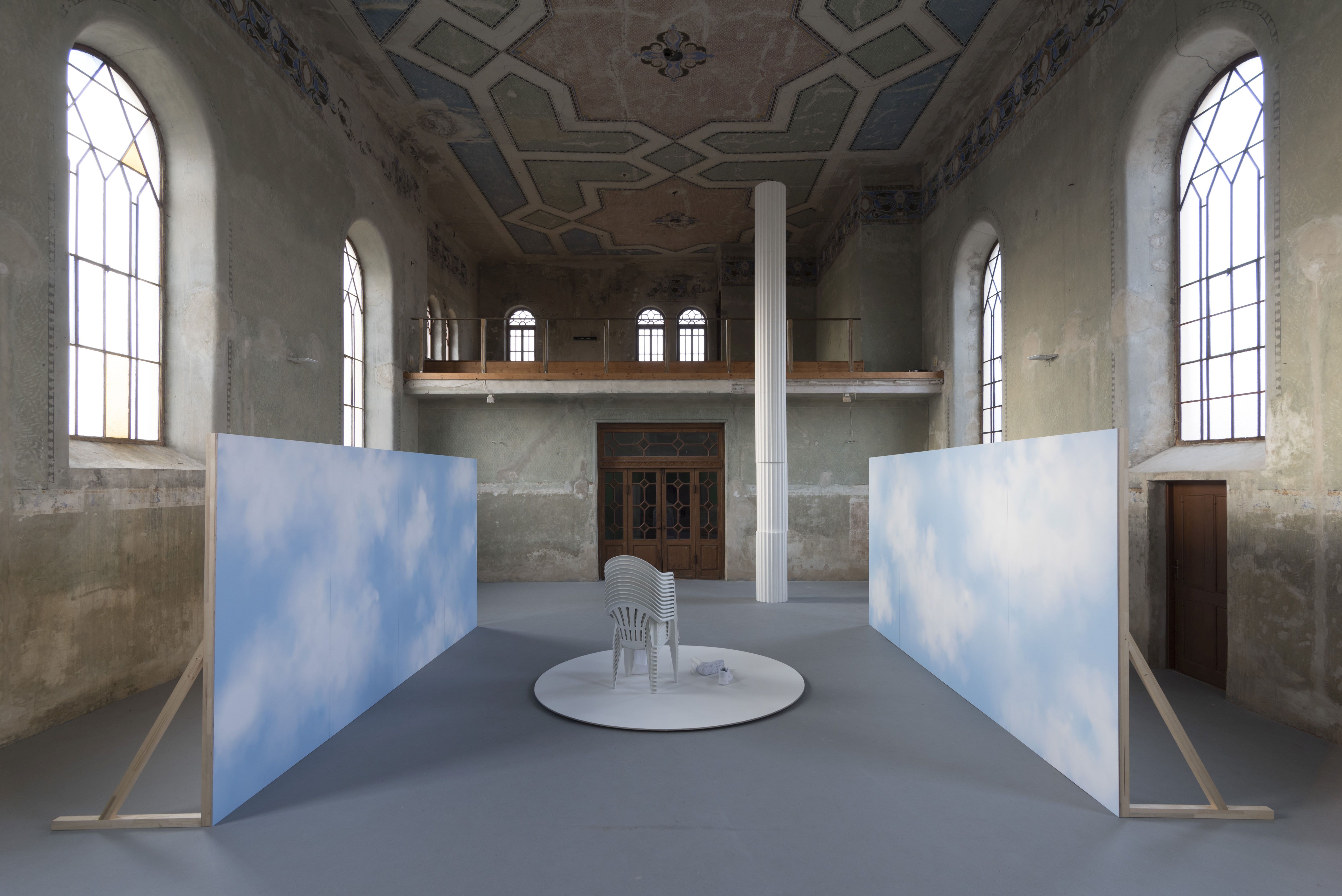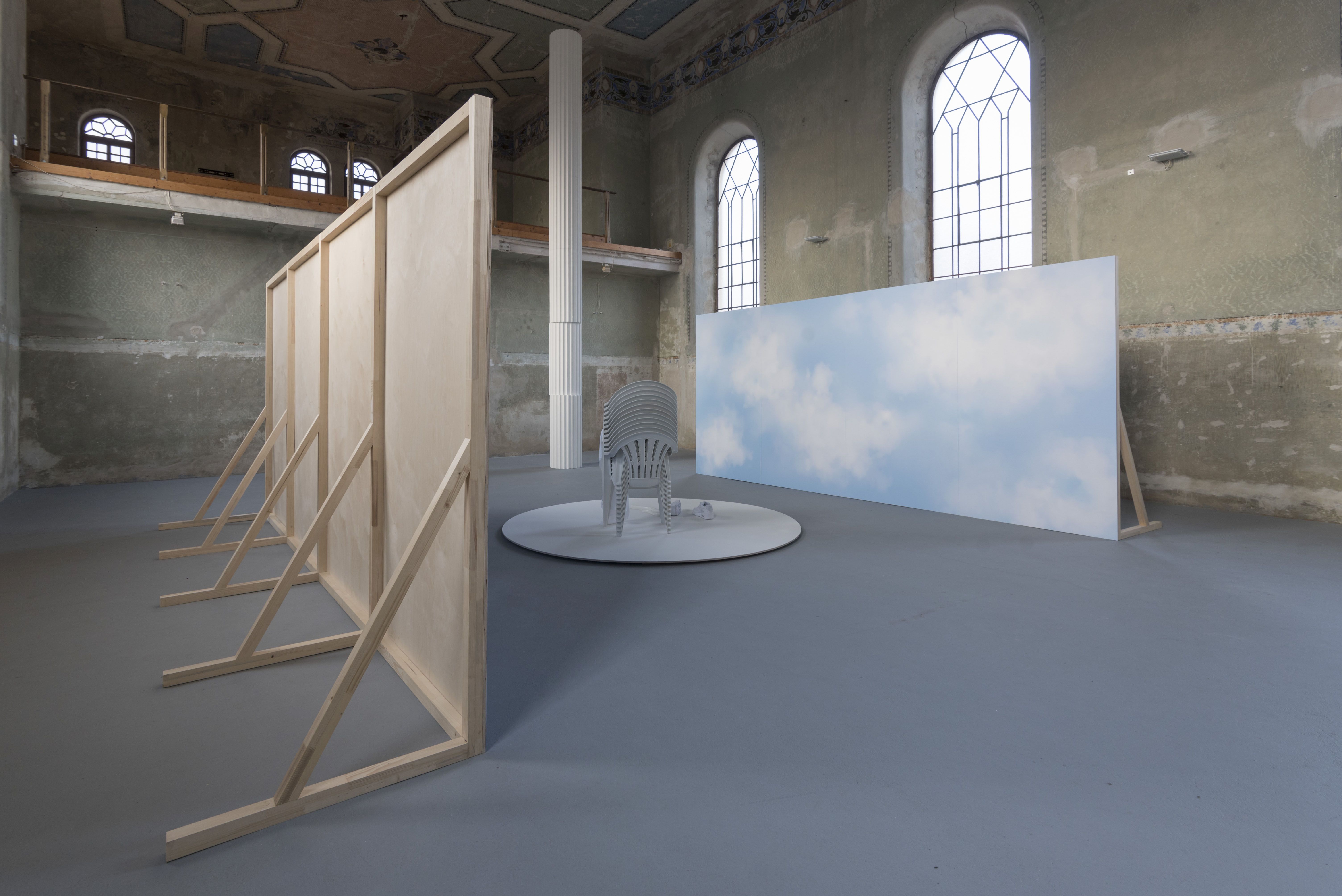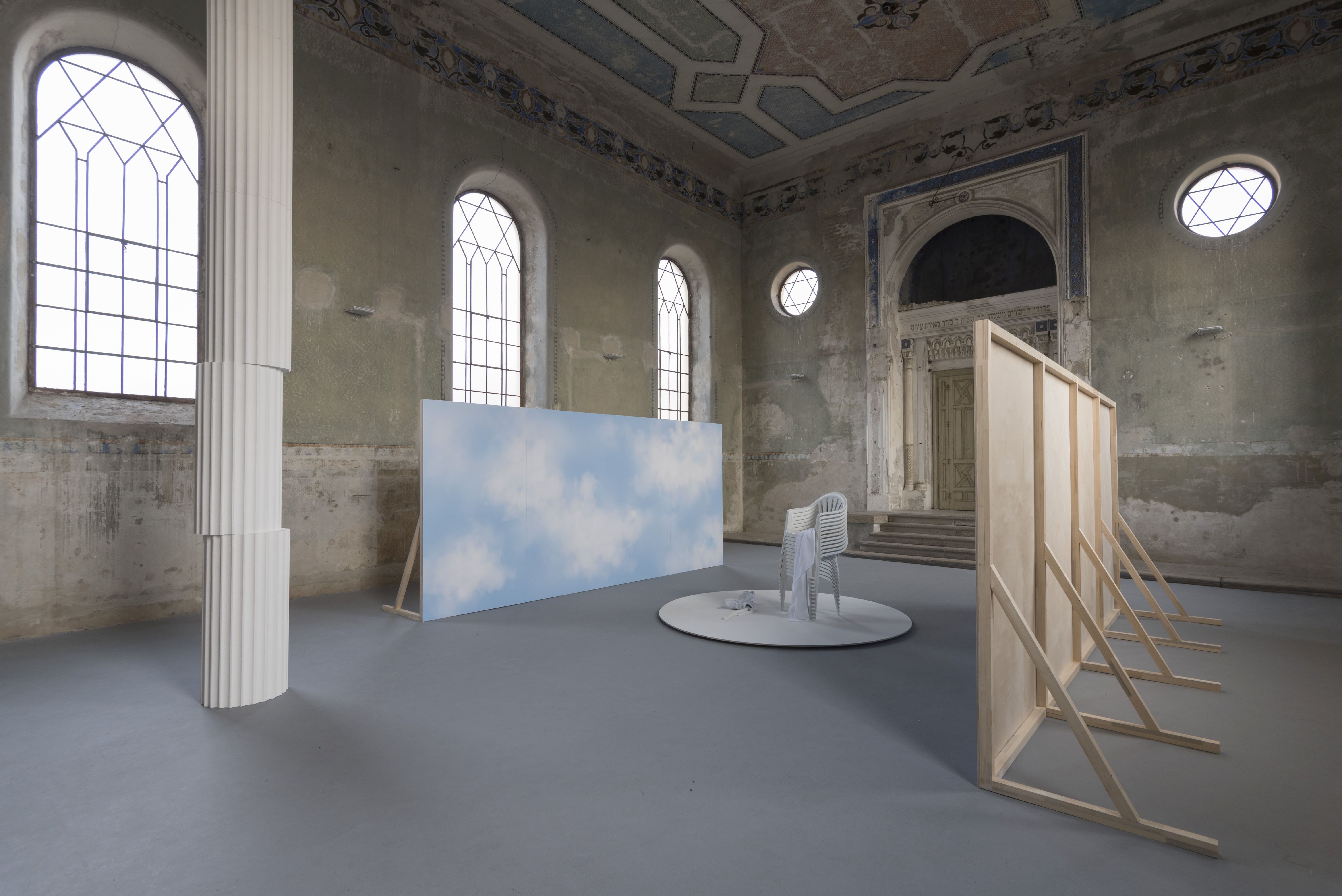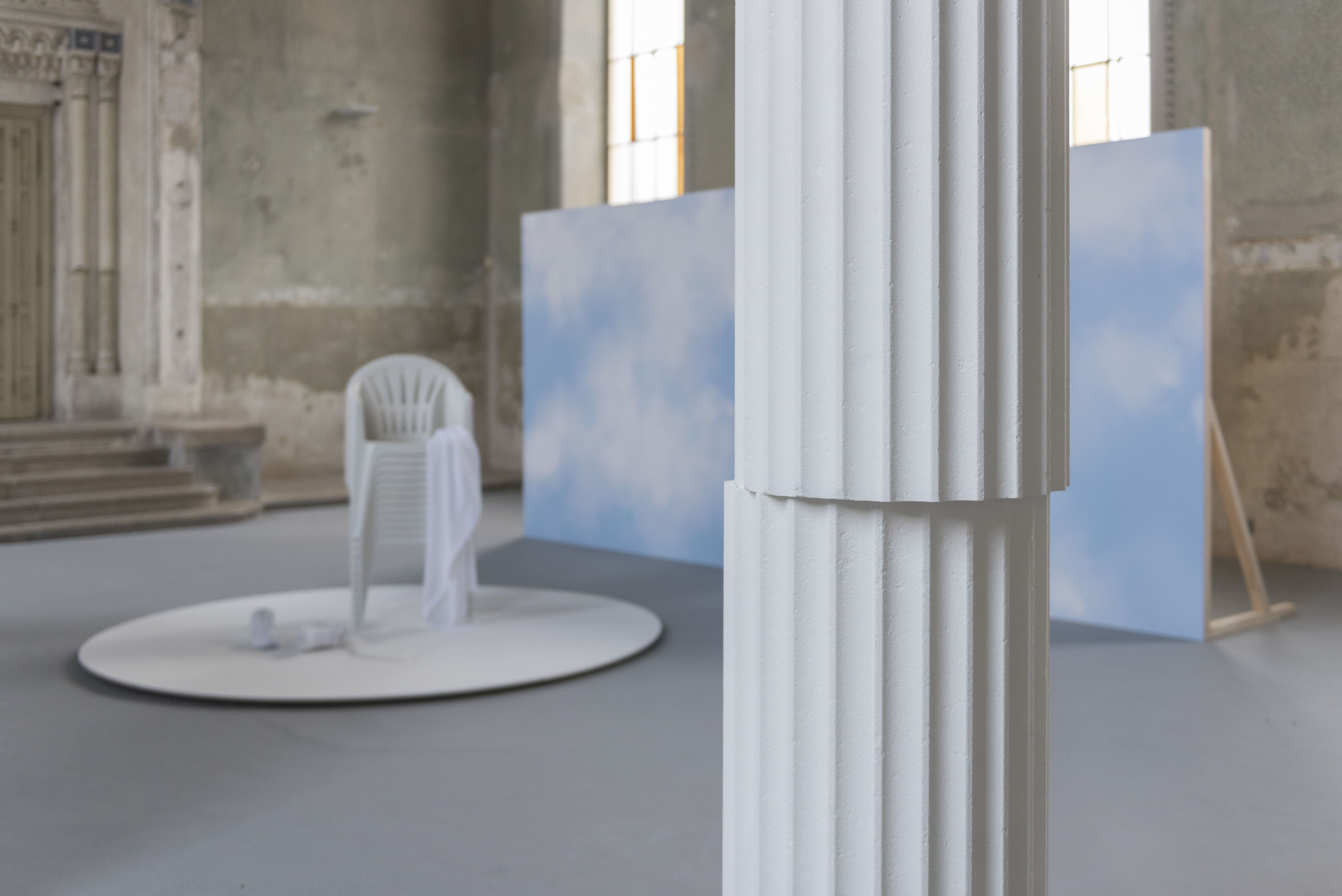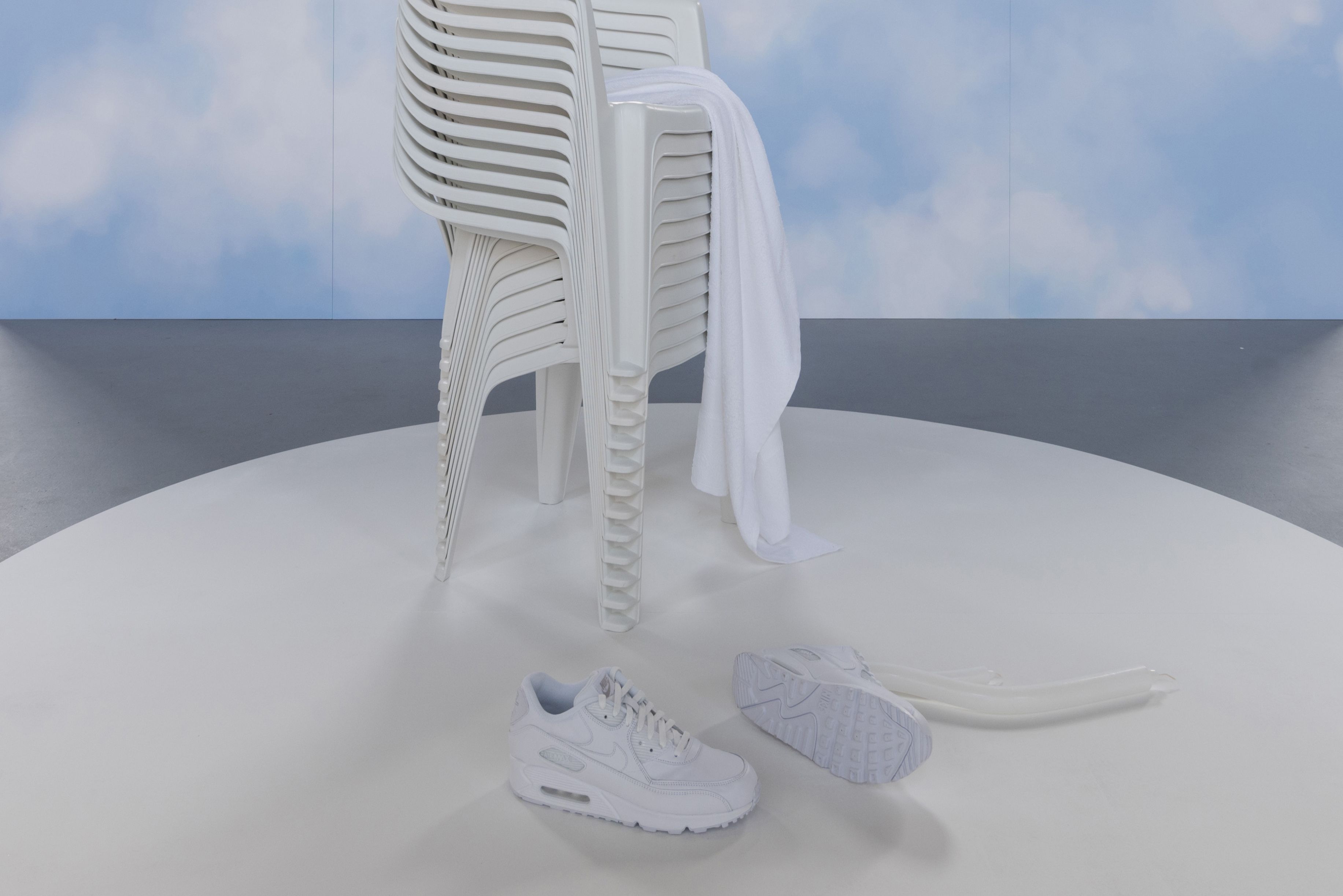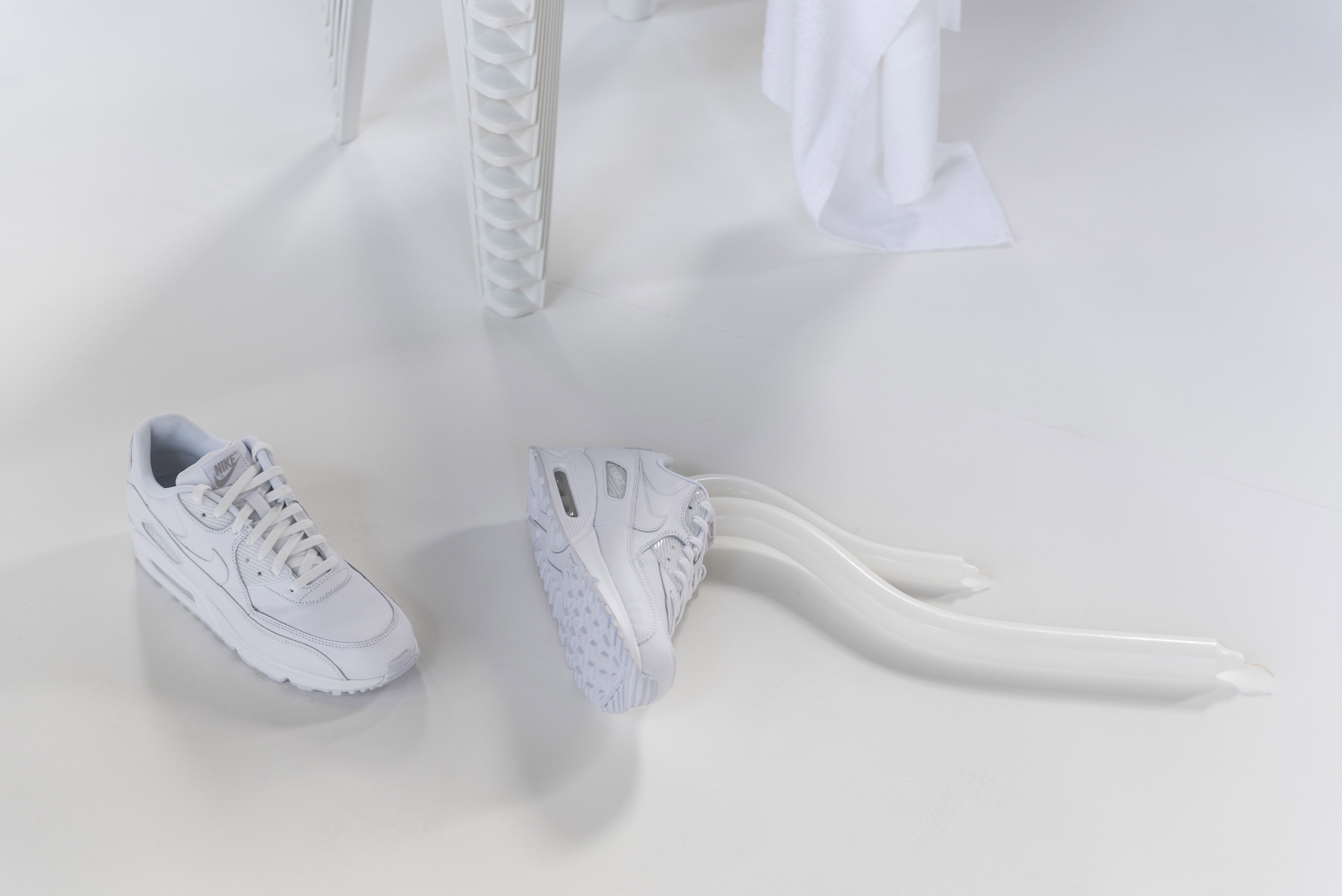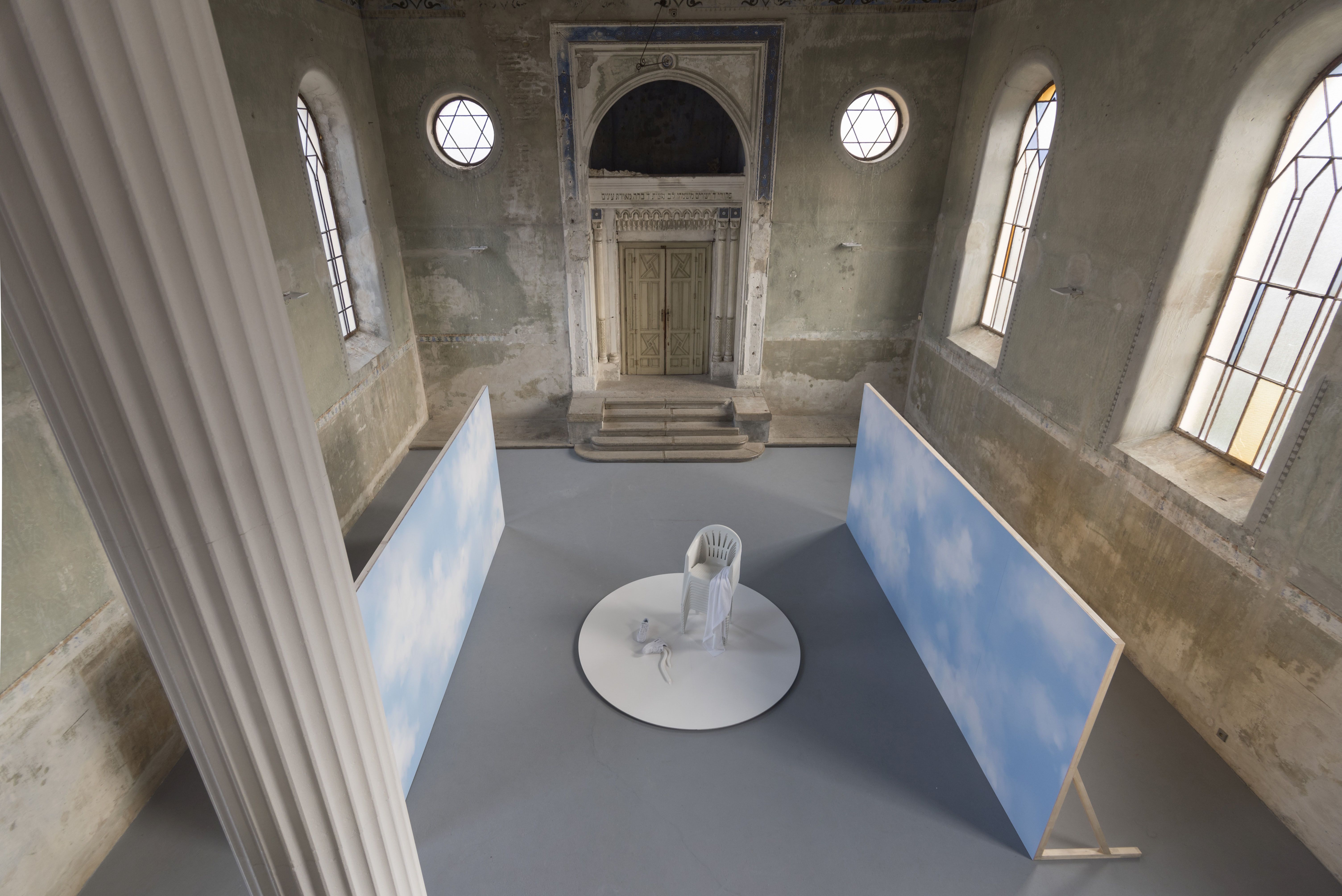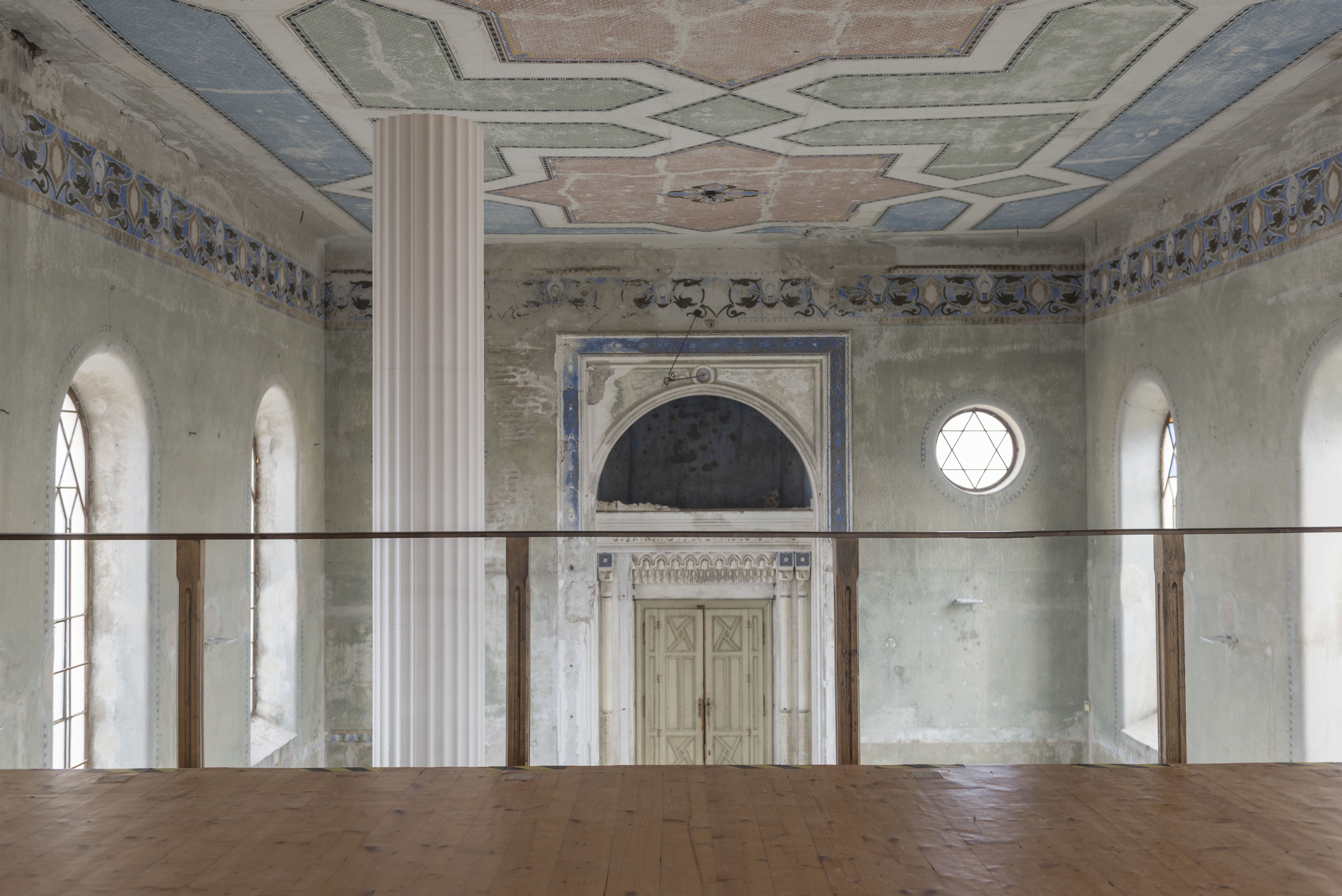Artist: Kristián Németh
Title: Monument of Possible Fall
Venue: At Home Gallery, Šamorín, Slovakia
Curator: Michal Stolárik
Date: November 23, 2019 – February 25, 2020
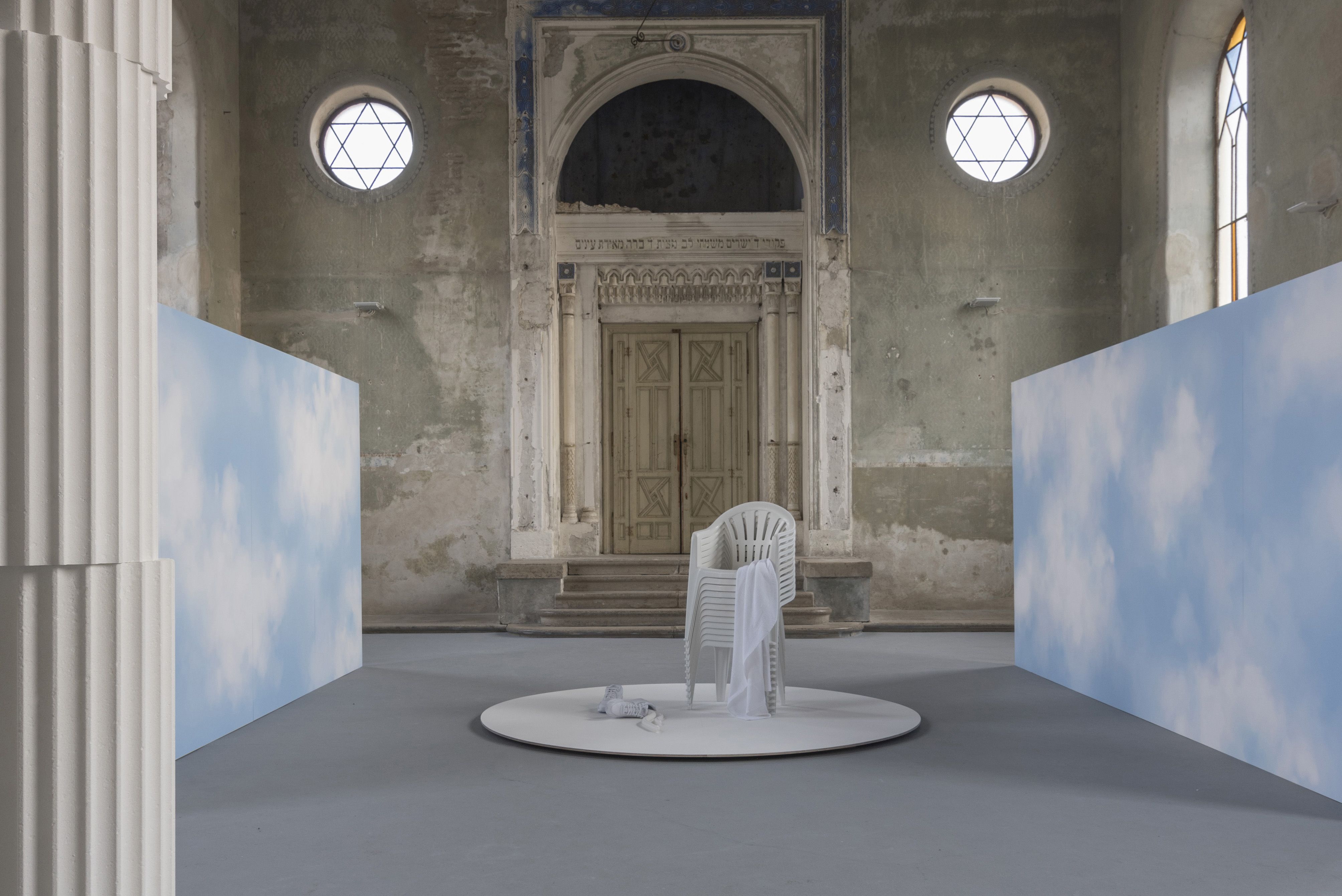
The exhibition project Monument of Possible Fall is Kristian Nemeth’s latest piece of work. Kristian, who is currently finishing his doctoral studies at Martin Piacek’s Studio vvv at the Academy of Fine Arts and Design in Bratislava, continues with his main field of interest – the Catholic Church and questions the defined dogmas, its power, stability and importance. He does not criticize the Church out of pleasure; despite the fact that he does not agree with the institution in most principles, it provides interest that encourages his work that naturally oscillates between the generally known and his personal experience and provides fascination, alternating between abstract and symbolic forms with specific ones. Each new project or work of art is a continuation and extension of his previous work.
The Monument of Possible Fall project builds upon Nemeth’s exhibition titled No Beginning, No End that was organized at At Home Gallery in Samorin in 2017. The concept was inspired by the bizarre incident of 2002 when a two-meter high renaissance statue of Adam collapsed in the Metropolitan Museum of Art in New York. The ideal of perfection created in the 15th century by an Italian sculptor Tullio Lombardo collapsed because of a damaged pedestal. The restorers managed to put the fragments together and bring the statue back to life but this incidental collapse inspired Kristian. The symbol of fall is applied to the concept of the inability of the Church to adapt to the needs of modern Christians who may question the importance and significance of the individualized faith in the context of the Church’s hierarchy due to the current problems of the institution and its wrongdoings.
At At Home Gallery Kristian created an imaginary environment that is formally abstracted into simple fragments with certain theatricality and symbolism. The scene consists of a circular podium, set-pieces and main focal point. A monumental six-metre high column touching the ceiling of the gallery is a dominant element. Kristian was inspired by classic antique shape that has formally adapted to various architecture styles (including sacral buildings) throughout the years. He chose a stylised form without a specific capital or support function. Nemeth’s column just stands and reaches up. Its relative stability is lost through careful examination. From one perspective, the column stands strong, from others, one notices a pulled-out segment. Through the possibility of fall, the author is going back to the statue of Adam from the previous exhibition. By minimalistic reorganising of reality and subsequently creating a feeling of uncertainty, the author hints at one’s personal experience. A solid base of eternal architecture is turned into a dysfunctional monument of modern days. Is the base of the faith solid enough to hold those difficult-to-forgive actions of the representatives of the religious institution? How fragile is trust in the Christian faith?
A slightly raised circular podium that serves as a tray for known objects in new light is the main element of the exhibition. A neutral and innocently white construction is a base for simple installations – white readymades of the consumer society. From far they form a blurred mass and force viewers to come closer and take a more detailed look. We see well-known Nike Air Max sneakers at the podium, casually laying and probably recently taken off. The cult pair of sportwear with distinctive title forces us to look up – to the sky. Organic-like objects peeking out of one of the sneakers are a disturbing sign. The motif of deformed white candles used during the First Communion is often used in Nemeth’s work. The current representation of the candles shows they are gaining independence and free will.
A dozen common plastic chairs are ideologically merged with holiday feeling and never-ending comfort. The way these are facing the column does not allow the viewers to see that the monument is deformed. The number of chairs refers to the twelve Apostles, followers of Jesus Christ and founders of the Christian Church. The piled-up chairs stand strong but if one falls, all fall. The towel and its soft fabric stand against deformed and sculpturally hard surface. The whole constellation is happening in front of large photographs of the sky that put the whole exhibition into a virtual heavenly sphere.
